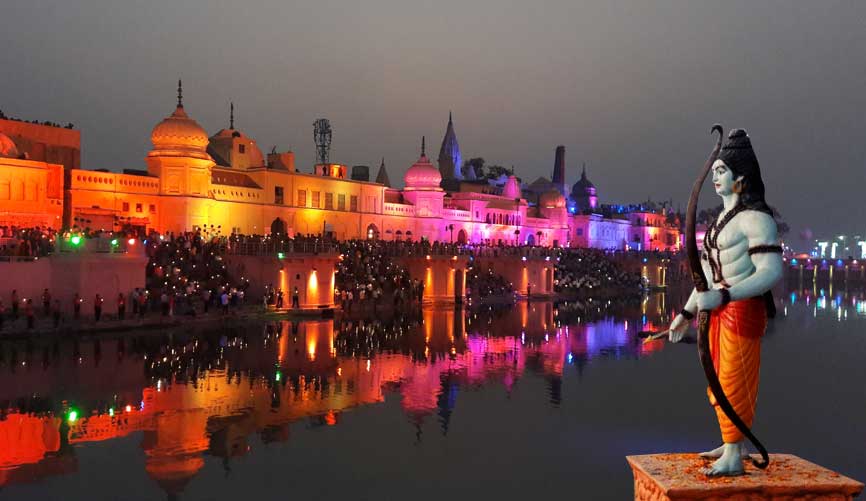Quick Facts
Area 2522.0 Sq. km
Altitude 93 meters above sea level
Languages Hindi, English
Local transport Bus, Taxi, Auto-Rickshaws, Cycle-Rickshaws
STD code 05278
Ayodhya which is also known as Oudh or Awadh, a town in Uttar Pradesh in the Northern part of India is one of the most sacred towns in the country. In ancient times, Ayodhya was considered the most sacred land, and the people somehow believe that it still holds a lot of importance in their life. Famous for the birth of Lord Rama, Ayodhya is also famous for his father ‘Dasharatha’. In the past times, the town was prosperous and well-fortified, having a large population.
In the 6th-5th BCE century in the Buddhist times, Ayodhya was an early kingdom of King Kosala and Shravasti became the chief of the kingdom. There are a lot of inscriptions that say there was a town of Saketa where the Buddha had resided for some time. Apart from all these things, there were also numerous other monuments like Stupa made by the Mauryan Emperor Ashoka in the 3rd century BCE.
Even before the reign of Akbar, the nature of the province and the internal divisions seem to have been constantly changing. And the Awadh of the Mughal Badshah Akbar was among one of the twelve subedars. With the end of the 16th century, the Subedar comprised 5 sarkars including Bahraich, Khairabad, Gorakhpur, Awadh, and Lucknow which was also categorized into enormous mahals and dasturs. During the rule of Farrukhsiyar, Khan Zaman Khan Ali Asghar who was the son of Qazi Ghulam Mustafa was appointed as Subahdar of Awadh. He was replaced by Aziz Khan Chughtai. After some time, Mahabat Khan took the charge of Subahdar in place of Zaman Khan Ali Asghar. The latter was transferred to Azimabad (now known as Patna) as Subahdar in place of ‘Sar Buland Khan’.
There are some scholars of the present day who believes that Ayodhya is the same mythical place that was there at the time of Gupta period in around 4th – 5th century A.D. In the year, 1992, the Hindus tried replacing Babri Mosque to make Temple of Lord Rama there, but they somehow failed to do so.
AYODHYA AS SAKETA
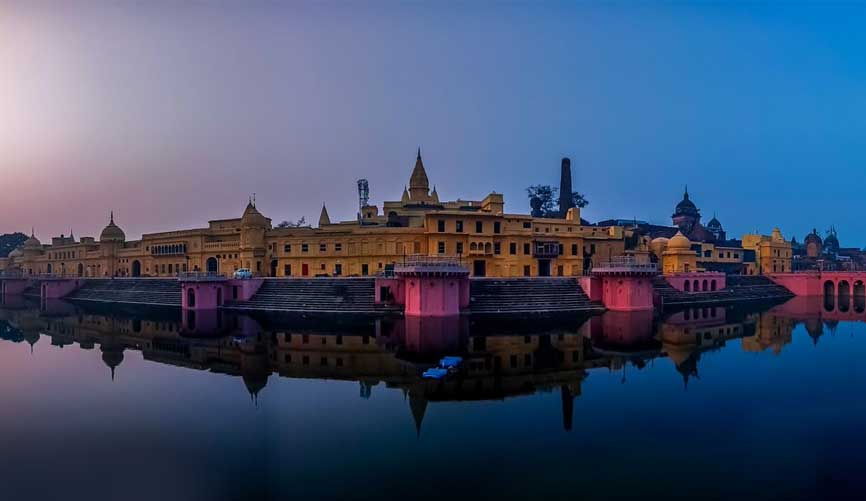
The records inscriptions suggest that in the 5th and 6th centuries BC, the present-day Ayodhya has developed into an urban center. The name of the site at that time was Saketa city which became one of the biggest market place located at the junction of two important roads – Shravasti – Partisthana and Rajagriha – Varanasi- Sharvasti – Taxila east-west road. Some texts believe that Saketa was nestled in the Kosala Kingdom that was ruled by Prasenajit.
GUPTA PERIOD
In the 4th century, there came the time for Guptas who revived Brahmins and established their control on Awadh. According to the source Vayu Purana and Brahmanda Purana, the Guptas ruled the Saketa and no Gupta-era archaeological layers have been identified in the present-day Ayodhya and also Gupta coins have also been discovered in a large amount from the region. It is quite evident that at this time, the habitations in the city were nestled in the areas that have been excavated at present. In the 5th century, a Chinese traveler Faxian state that the remains of Buddhist buildings were found at ‘Sha-chi’ during his time. The important development has been identified at the time of the Gupta reign of Saketa as the legendary city of Ayodhya, the capital of the Ikshvaku dynasty. In the 436 AD, the Karamdanda inscriptions state that the Ayodhya was considered as the capital of Kosala province by the Karamagupta I. Paramartha states that the royal King Vikramaditya was shifted to the court to Ayodhya. Robert Montgomery Martin was the first person that recorded the local tradition of Ayodhya in 1838. He mentioned the demise of Lord Rama’s descendant Brihadbala and remain deserted until the Vikrama – a King of Ujjain came here searching for it. He purely made the town beautiful and cut down all the trees that destroyed ancient ruins and also built around 360 temples.
AWADH UNDER MUGHALS & BRITISH
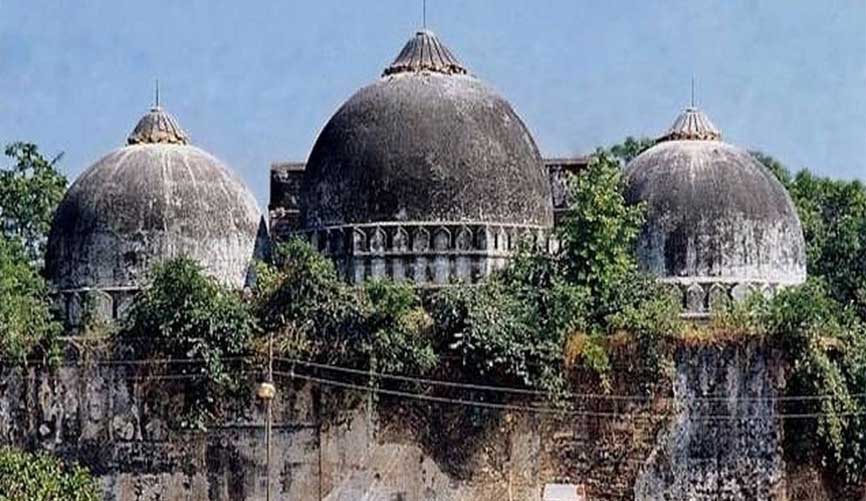
When the Mughals came to control over the Ayodhya, they built Babri Mosque there and the capital of the province of Ayodhya was also named Awadh that time. After the death of King Aurangzeb, the Mughals got weakened in 1707 AD and Awadh virtually became free from all the bondages of Mughal rule, making Ayodhya as its capital. In 1856, Ayodhya was again captured by the Britishers and at that time, the popular group, Shia and Sunni had protested against the behavior of the previous ruling government. The British came in between and has crushed the group of Shia and Sunni and in 1857, the British took control over the town and reorganized it into the United Provinces of Agra and Oudh. In the 1850s, a group of Babri mosque was attacked by the Hindu mobs, because it was built by destroying the temple of the birthplace of Lord Rama. To maintain peace and love, the British government divided the premises between Muslims and Hindus.
PLACES TO VISIT IN AYODHYA
After a hurdle of around 500 years, the groundbreaking ceremony for the foundation to build the temple of Lord Rama in Ayodhya was finally carried out on August 5, 2020. The 40-kg silver foundation was laid by the humble Prime Minister, Shri Narendra Modi. Around 9 bricks were kept here which were sent by the devotees of Rama back in 1989 across the globe. These bricks will now be encashed and money will be used in constructing the temple. Soil from more than 2000 pilgrimages and holy water from more than 100 sacred rivers had been brought to lay the foundations. The Bhoomi Pujan in Ayodhya was attended by more than 195 eminent personalities.
If you ever want to visit the town then there are enormous major Tourist Attractions in Ayodhya where you can relive the past and know what happened in ancient times. If you are a history buff then you must head to these following places to visit in Ayodhya.
RELIGIOUS SITES
RAM JANMABHOOMI
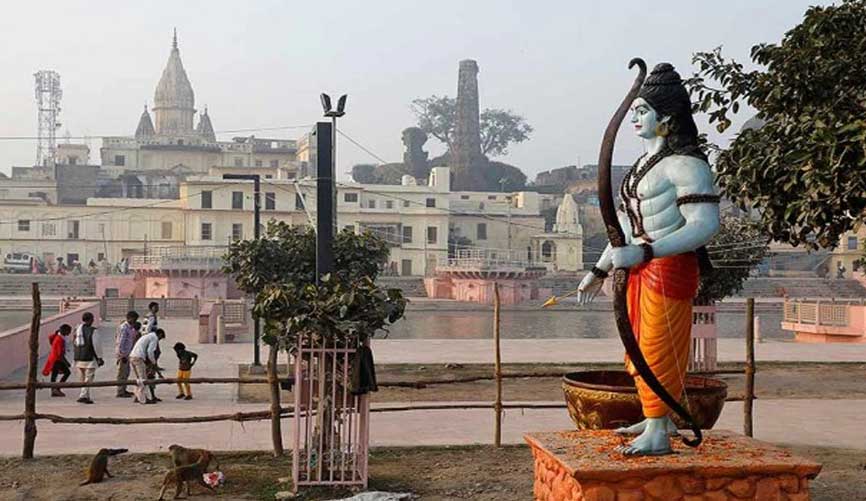
The birthplace of Lord Rama, the Ram Janambhoomi is one of the sacred places in Ayodhya. According to the Indian epic Ramayan, Lord Ram who is the seventh manifestation of Lord Vishnu’s was born here and spent his childhood and grown-up along with the Sarayu – Ayodhya’s river. The Ram Janambhoomi is a soulful place for many Hindu devotees. After having a dispute over temple and mosque, the land was handed to a trust by the Supreme Court of India to build the Ram Temple, but on August 5, 2020, the government of India took the charge to lay the foundation of Ram Mandir by the Prime Minister Narendra Modi. This decision was taken after 500 years of struggle and the whole country celebrated Diwali on this day. The Ram Mandir will be constructed where once Babri Mosque was built by the great king of Mughals – Babur. It is also one of the major Tourist places in Ayodhya that you can visit with your family to seek the blessings of Lord Rama.
HANUMAN GARHI
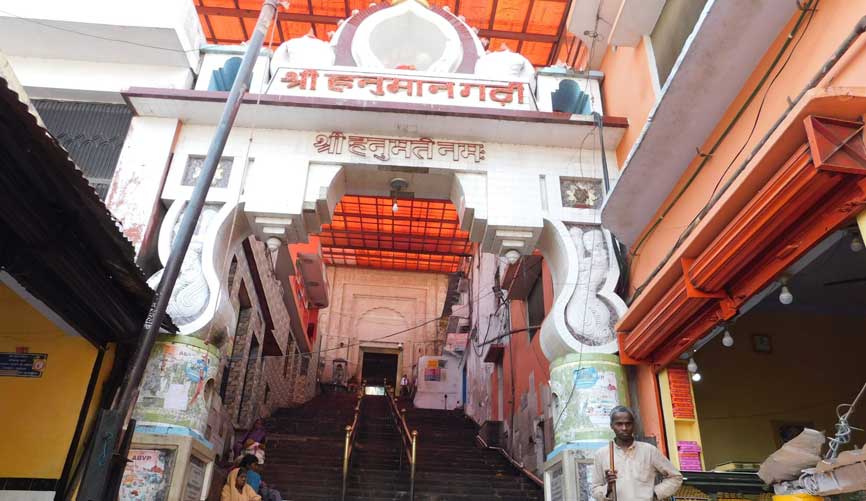
Nestled in Sai Nagar, Hanuman Garhi is a 10-century temple dedicated to the Hindu God, Hanuman. It is one of the important shrines in Ayodhya and it is important t visit Hanuman Garhi before visiting the Ram Temple. The local people of the area believe that the Hanuman once lived there and protected Lord Rama to the core. It is considered as major Tourist places in Ayodhya where you will see a lot of devotees.
The Hanuman Temple has around 76 stairs to enter the temple. Surrounded by the scenic views, the 6-inch tall idol of Hanuman, the interiors are befitted with the numerous statues of Lord Hanuman along with his mother Anjani. At Hanuman Jayanti, a lot of people come here to seek the blessing of the Lord and celebrate the festival.
NAGESHWARNATH TEMPLE
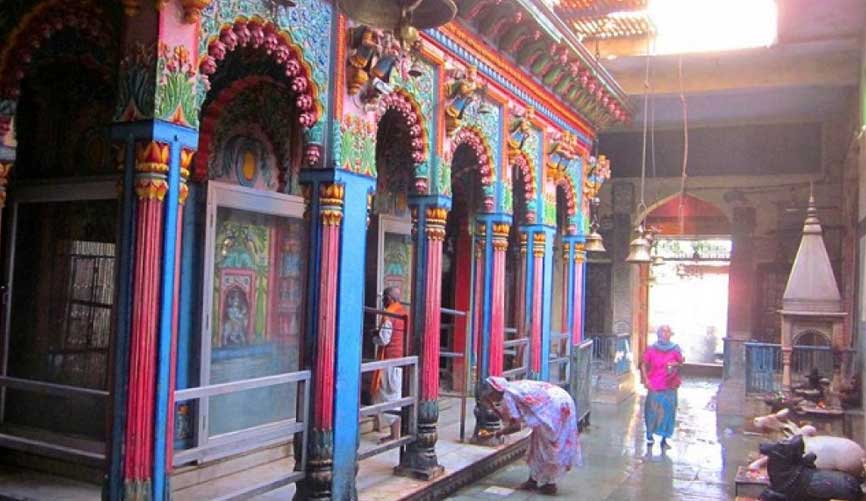
One of the other Religious places to visit in Ayodhya is the Nageshwarnath Temple and it is situated adjacent to the Their Bazaar. The local people believe that it has been constricted by Luv and Kush, the sons of Lord Rama. It has been built back in 1750 AD under the rule of Safar Jung’s minister, Naval Rai and since that time, the temple is still intact. During Mahashivratri, a lot of devotees flock here to celebrate the festival every year.
GULAB BARI
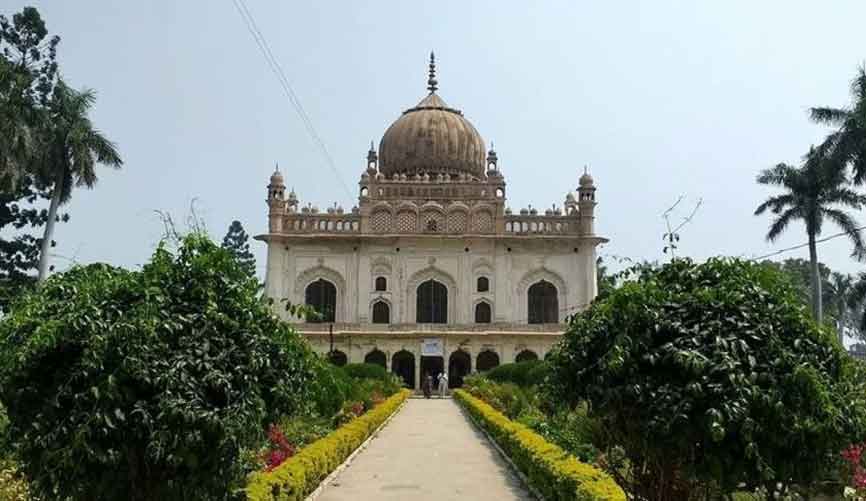
Like its name, Gulab Bari is also well-known as Garden of Roses and is nestled in Vaidehi Nagar. It is also one of the Best destinations to visit in Ayodhya. It is said to be the third tomb in the name of Nawab of Faizabad. During the 18th century, the architecture of Gulab Bari reflected the pure Nawab-styled interiors alongside a vast array of rose species along with fountains and green surroundings. At present, it has been served under the Ancient Monuments Archaeological Sites and Remains Act as a part of national heritage.
TRETA KE THAKUR
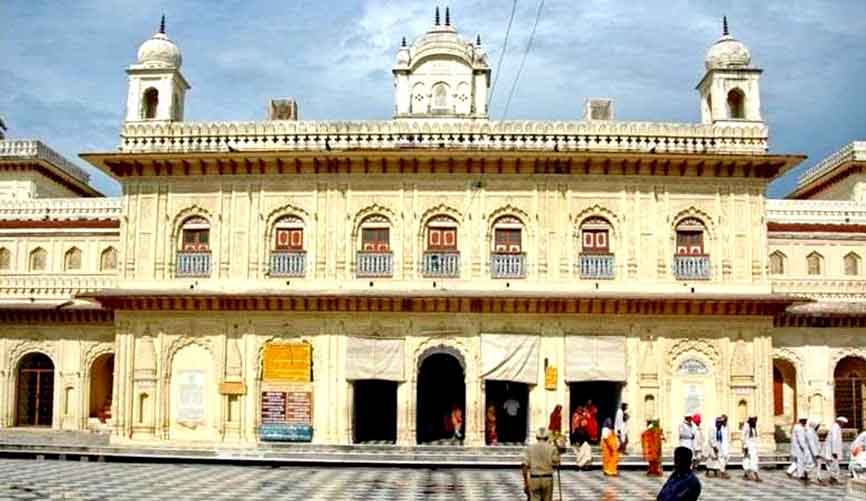
Located on the Naya Ghat of Ayodhya, the Treta Ke Thakur Temple has numerous idols including that of Lord Ram, Sita, Laksham, Hanuman, Bharat, and Sugreev. The statues of these Gods have been made out from single black sandstone and looks beautiful. It is also a major Tourist attraction in Ayodhya that people come across the country. The temple was being constructed 200 years ago in the ancient times by Kullu, the King of that time who had ruled Awadh.
SIGHTSEEING
There are some major Sightseeing to visit in Ayodhya and every year, a lot of people head to the following places to mesmerize them to the fullest.
TULSI SMARAK BHAWAN
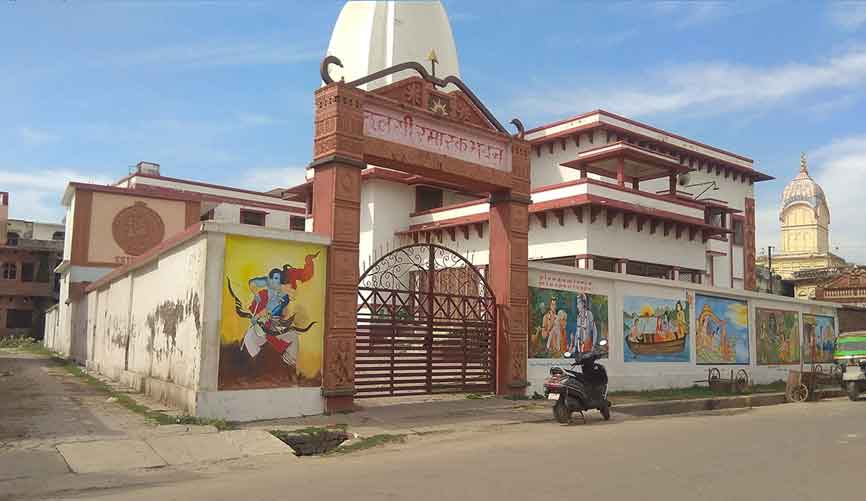
The monument was constructed in the memory of saint-poet, Goswami Tulsidas. It is the place where Tulsidas wrote Ramcharitra and it was built in 1969. Located on the eastern end of the National Highway at Rajgang Crossing in Ayodhya, the Smarak also offers a research center known as ‘Ayodhya Research Sansthan’. It is also one of the best places to visit in Ayodhya if you want to know more about the sacred place.
The library has been made for all the people who like to know more about the culture, past and spiritual information about Ayodhya. The center has enormous books of Ramayana art and craft and has a daily recitation of Ramkatha. In 1988, the Government also a museum known as Ram Katha Sanghralaya where you will find several quality collections of facts, data, and antiques preserved today as well.
MOTI MAHAL
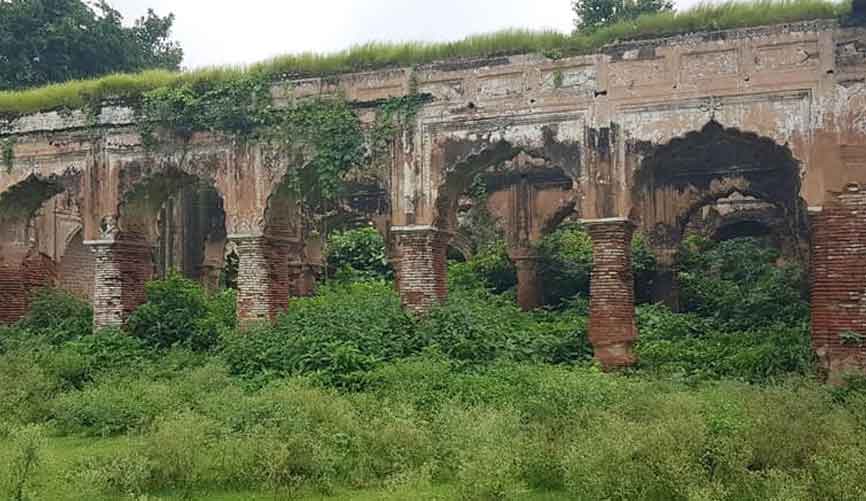
Next Sightseeing in Ayodhya is the Moti Mahal which is nestled a few km away from the town of Ayodhya. It is also famous as ‘Pearl Palace’ which was come into existence in 1743 AD. It is said that the place was the residence of Queen Begum Unmatuzzohra Banu who was Nawab Shuja-ud-Daulah’s wife. The plush architecture in Mughal style reflects the rich heritage of the Nawabi culture.
GUPTAR GHAT
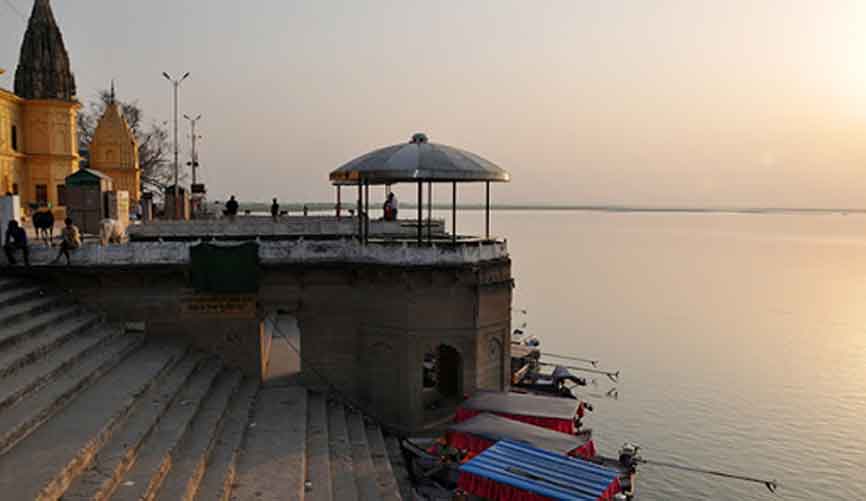
Settled on the banks of Sarayu, Guptar Ghat is another major Tourist attraction in Ayodhya and the Ghat was once the neighbor of the colonial Company Gardens, which is known as Gupta Ghat Van at present. This place is considered another pious land where Lord Rama meditated and he undertook the ‘Jal Samadi’ in the river Sarayu. The small town is dotted with several shrines but the popular ones are Sita-Ram Temple, Chakrahari shrine, and the Narsingh Temple. The Ghat is considered sacred and at the time of festivals, the devotees take a plunge into the holy river.
MANI PARBAT
The list does not end here; Mani Parbat also comes under the major Sightseeing in Ayodhya that is perched around 65 feet above the sea level. Mani Parbat is a tiny hillock located in Kami Ganj and offers some panoramic views of the city. The Parbat also has a Stupa made in the times of Emperor Ashoka and a Buddhist Monastery back in ancient times.
BAHU BEGUM KA MAKBARA
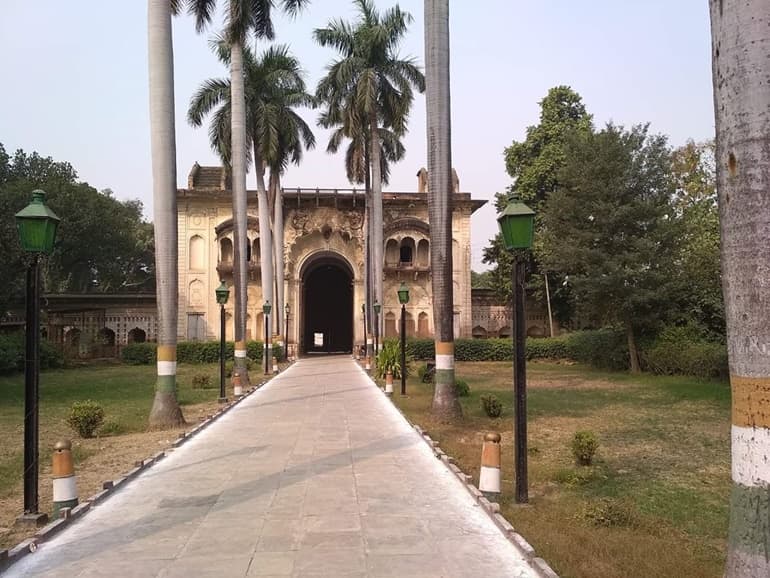
Last but not the least; Bahu Begum Ka Makbara which is situated on the Maqbara Road is also one of the popular places to visit in Ayodhya. The Makbara depicts the great artwork in the Mughal times and is the tallest amongst every other monument in the region. The Maqbara comprises around three domes that are intricately designed and the walls, as well as ceilings, have been tastefully done up. The brilliant art of the craftsmen is visible through the work. Made in the memory of Queen, the monument cost around three lakh rupees. At present, the premises have been taken care of by the Government and have renovated some of the parts to enhance beauty. In the later years, it has gained immense popularity as a Tourist place in Ayodhya and a lot of visitors come to witness the beauty of the monument.
THINGS TO DO IN AYODHYA
SITA KI RASOI
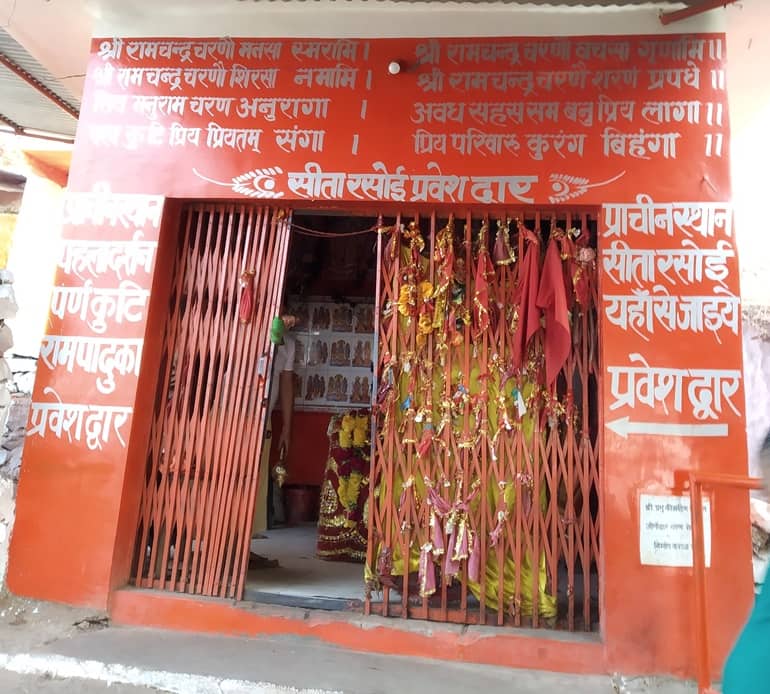
As the name suggests, Sita Ki Rasoi used to be the kitchen where the food was prepared for the Goddess in ancient times. But later it was renovated and transformed into a temple. In the corner of the temple, there is a kitchen fulfilling the needs of the modern world that was found that was made years ago. The kitchen has plates, utensils, and other important things to make the food. On the other side of the shrine, there are deities of Lord Rama, Lakshman, Shatrughan and Bharat with their respective wives. The kitchen holds significance as the Sita is a Goddess of food and food is served to the poor people and the needy ones. It is believed that Goddess Sita is feeding the poor people and the people just follow up on the tradition. The Sita Ki Rasoi is one of the Best Things to do in Ayodhya that you can pay your visit to. The devotees can also feed the poor people or give some money to add your contribution to the legacy.
RAMKATHA PARK
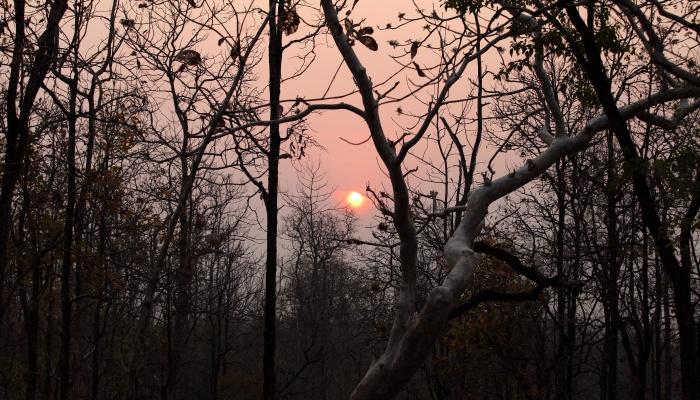
Other Things to do in Ayodhya that a must-visit, if you believe in Lord Rama, is head to the Ramkatha Park. It is a beautiful park which was built years ago and the visitors as well the local people enjoy the cultural activities in the open theatre. There is a proper sitting arrangement for the people and the visitors who come to witness the magic of Lord Rama’s activities. Almost every day, the park is loaded with some of the other activities and all the important festivals and performances in the park. It is also quite spacious which is equally conducts devotional prayers meetings, cultural performances, poetry, and storytelling among others. The shows that carried out here will make you feel like God has just arrived in front of you.
RAM KI PAIDI
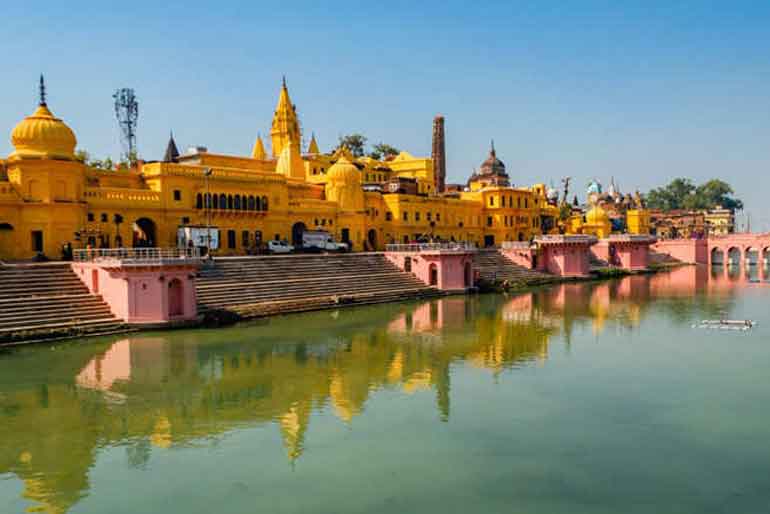
Sarayu is one of the most sacred rivers in Ayodhya and by this river; there are several ghats which is dotted with numerous temples and places of worship. If you wish, you can also take a ride through a boat and witness enormous beautiful sites especially at the time of dusk and dawn. The Ghats have many temples and you will see the priests chanting prayers and doing Arti for the different Gods. Make sure that you visit these temples during the time of Aarti and it will soothe your senses and fill you with peace and solace. You can also take a dip in the holy water to cleanse yourself and every other person who visits here surely take a plunge in the river. As it is offering so much positivity and mesmerizing views, you should not forget to pay a visit to one of the best places to visit in Ayodhya.
BEST TIME TO VISIT AYODHYA
The sacred land of Lord Rama is nestled on the banks of River Sarayu which is about 9000 years old. The city had traces of Lord Rama being born here and due to this, it is believed pious amongst the Hindus. Due to this reason, many devotees flock here every year to worship him and offer their prayers. But if you are planning to visit Ayodhya any time near the future, here are the best times that you can visit there. Below are the description of all the seasons and the best time to visit Ayodhya.
SUMMER (April-June)
Summers in Ayodhya starts from April and lasts till July being the hottest months of the whole season. The temperature during this time is around 43 degrees Celsius in the afternoon and at night it is around 32 degrees Celsius. If you visit the city at this time, the scorching heat may not allow you to step out in the afternoon and you have to wait for the sunrise as that would be the perfect time to explore the town. May sure you wear light and comfortable clothes as even after sunrise, the heat prevails. Usually, the summers are not the suitable season to visit as the climate is mostly humid. Yet, at the Ram Navmi, the birthday of Lord Rama falls in the month of March-April when the devotees visit the place to worship him.
MONSOON (July-September)
Monsoon in Ayodhya arrives in July till September and most of the parts of Uttar Pradesh get drenched in heavy rainfall. The temperature in the afternoon prevails to 32 degrees Celsius and at night it drops to 22 degrees Celsius. At this time, the weather is salubrious and the cold winds will automatically make double up your happiness of coming here. If you are okay to roam in the rainy season so it is the best time to visit Ayodhya as you will be away from humidity and heat. It is a pleasant experience to go and see the sites and enjoy the street food with your loved ones. This time is considered the Best time to visit Ayodhya.
WINTER (October-March)
Another perfect season to visit Ayodhya is in winter as the temperature stays to 20 degrees Celsius in the morning and it drops to 5 degrees Celsius at night. So, it is the best time to explore the city and enjoy the cultural and spiritual vibes. If you visit in January or in December, the climate is cold than usual so you should keep warm clothes and other necessary things with you. It is also a wonderful time to stroll around the places in the city since there is not that much heat and you can also spend the time with your family and can devote the time to the God and Goddess also.
HOW TO REACH
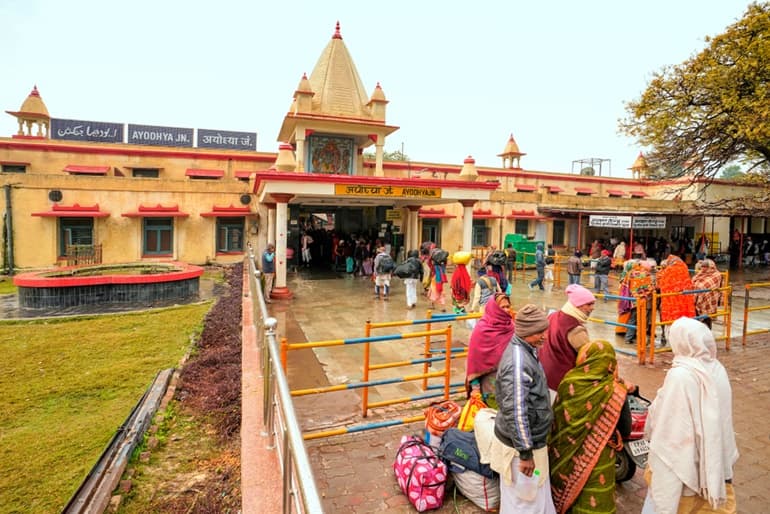
Located in the Faizabad District of Uttar Pradesh, Ayodhya is the city where Lord Rama was born and holds a great significance in its past. It is also popular for the devotees that flock here every year to worship the Gods and Goddess present here. Ayodhya does not have any direct routes and neither an airport in the city. But to God’s grace, it has great connectivity through roads and railways. Below are some of the best modes of transportation through which you can reach Ayodhya.
BY AIR
Although Ayodhya is one of the most visited places in Uttar Pradesh still, it does not have a direct flight from other cities. The nearest Airport would be Faizabad Airport which is around 8.2 km away from the town. If you are coming from Chennai or any part of South India, you can take a flight to Faizabad Airport and hire a cab or taxi to reach your destination. Taking a fight would be a smart idea if you are coming from far.
BY ROAD
Ayodhya has great connectivity via roads if you are coming from the adjacent cities from India. Some well-maintained National and State-Highways link the metro cities to Ayodhya of the neighboring states. If you do not have your vehicle then you can also board a bus that is run by the Uttar Pradesh Stet Road Transport Corporation (UPSRTC) and you can reach the town quite easily. Even if you are coming from somewhere else, visiting Ayodhya can be far better via roads due to its direct connectivity. We understand that this sounds tiresome but you can also enjoy the road trip with your closed ones.
BY TRAIN
Train journeys are always fun to do and guess what, Ayodhya has its Railway names as Ayodhya Junction Railway Station and the other is Faziabad Railway Junction. But it will be better that you take a train to Ayodhya Junction Station as it will ease down your traveling part. This railway station is just 450 m away from the city center and is the safest option to reach there.
So, the Honeymoon Bug has provided you with all the important information about the sacred place, Ayodhya. If you are a history buff or cultural enthusiasts look no further, what would be the better place than exploring our very own Lord Rama’s home ground ‘Ayodhya’? Visit there and make sure that you seek into the bhakti of the God and Goddess there and also explore the Best places in Ayodhya. Head to all the places that can lead you to dwell into the past and experience the magic of land with your loved ones!
